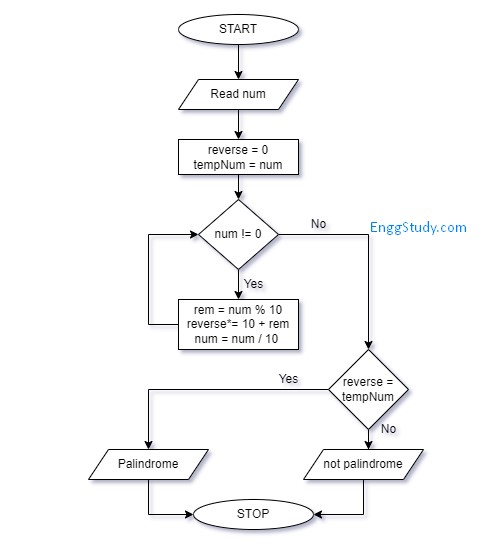The palindrome number program is one of the most asked questions in the technical round during placement. Though the program is easy to write and understand many new students in the programming find it difficult to understand. In this article on the palindrome number, we will try to simplify the program and algorithm for you.
Table of Contents
What is a Palindrome or Palindrome number?
A palindrome number is a number that reads the same forwards and backwards. In simpler terms, if you have a number, and you read it from left to right or right to left, it remains the same.
For example, let’s suppose we have a number 121. If we read it from left to right, it is 121, and if we read it from right to left, it is still 121. In this case, we can say that the number 121 is a palindrome number.
Another example is the number 12321. If we read it from left to right, it is 12321, and if we read it from right to left, it is also 12321. So, the number 12321 is a palindrome number as well.
But, if we take the number 12345, and read it from left to right, it is 12345. However, if we read it from right to left, it becomes 54321. In this case, the number 12345 is not a palindrome number because it is different when read in reverse.
So, a palindrome number is a number that remains the same when read forwards or backwards.
for example,
121 <-> 121
3663 <-> 3663
Above are the palindrome number.
Now we are going to understand the palindrome number in the form of a flowchart so your concept about it will get clear.
Flowchart to check if a given number is Palindrome or not

Algorithm to check if a given number is Palindrome or not
Step 1: Start
Step 2: Read the input number from the user
Step 3: Declare and initialize the variable reverse and assign input to a temp variable tempNum=num
Step 4: Start the while loop until num !=0 becomes false
- rem = num % 10
- reverse*= 10 + rem
- num = num / 10
Step 5 : Check if reverse == tempNum
Step 6: If it’s true then the number is a palindrome
Step 7: If not, the number is NOT a palindrome
Step 8: Stop
Also Read: Factorial of a given number – Algorithm, Flowchart, and Program
Palindrome number in Java
Code for palindrome number in Java is given below:
import java.util.Scanner;
class Palindrome {
public static void main(String[] args){
Scanner sc = new Scanner(System.in);
System.out.println("Enter Number: ");
int num = sc.nextInt();
int reverse = 0;
int tempNum = num;
while(num>0){
int remainder = num % 10;
reverse = reverse*10 + remainder;
num = num / 10;
}
if(reverse == tempNum) {
System.out.println("Given number is Palindrome");
} else {
System.out.println("Given number is not Palindrome");
}
}
}Palindrome number in Python
Code for palindrome number in Python is given below:
num = int(input("Enter Number: "))
reverse = 0
tempNum = num
while num > 0:
remainder = num % 10
reverse = reverse * 10 + remainder
num = num // 10
if reverse == tempNum:
print("Given number is Palindrome")
else:
print("Given number is not Palindrome")In this way, you can check if a given number is palindrome or not.
Easy steps to learn